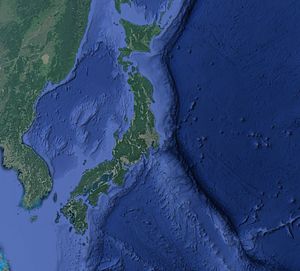Japan may soon deploy a long-range radar system in the western Pacific Ocean to monitor increased activity in the area by the Chinese military, Japan’s Sankei Shimbun reported this week.
The proposed deployment, under consideration in the Japanese Ministry of Defense, would be on the Osagawara island chain, which sits on the second island chain nearly 1,000 kilometers south of Tokyo.
Japanese interest in the western Pacific Ocean has intensified in recent years as the Chinese People’s Liberation Army Air Force (PLAAF) and People’s Liberation Army Navy (PLAN) started conducting regular exercises and patrols past the first island chain into these waters.
Starting in late 2015, both the PLAN and the PLAAF have started to regularly traverse Japan’s exclusive economic zone in international water and airspace to enter the western Pacific. Chinese military aircraft and warships have used the Miyako Strait, which connects the East China Sea to the western Pacific Ocean, as a transit point.
In December 2016, China’s lone aircraft carrier strike group entered the western Pacific Ocean for the first time.
For the Chinese military, accessing and operating in the western Pacific Ocean will be critical to supporting combat missions in the East China Sea, the South China Sea, and the Taiwan Strait. Moreover, in a conflict, China would seek to deny access to its coastal regions by U.S. and Japanese forces; maintaining a presence in the western Pacific would also support that objective.
In addition to the Miyako Strait, the PLAN and PLAAF have shown an interest in the Bashi Channel, which runs between Taiwan and the Philippine island of Luzon, as another strategically vital chokepoint permitting access to the Philippine Sea and the western Pacific Ocean.
Japan has gradually increased its maritime domain awareness and intelligence, surveillance, and reconnaissance (ISR) capabilities along its remote islands.
In March 2016, the Japanese Ground Self-Defense Force set up a radar outpost on Yonaguni Island, which sits near the southernmost tip of the Ryukyu chain, a little more than 100 kilometers from the coast of Taiwan.
While Japan has considerable resource exploitation rights in its large exclusive economic zone in the western Pacific Ocean, its ISR capabilities are more limited in the area.
The Japanese Ministry of Defense is reportedly studying sites on Ogasawara Island for the emplacement of a new long-range radar facility. Once the feasibility of such a site has been determined, the Japanese government will likely seek funding in its 2019 defense bill.
The Japanese Maritime Self-Defense Force (MSDF) conducts exercises and patrols in the western Pacific Ocean.
In March, 2017, the MSDF’s JS Ise helicopter destroyer joined the USS Carl Vinson strike group in the western Pacific Ocean for a bilateral exercise.

































